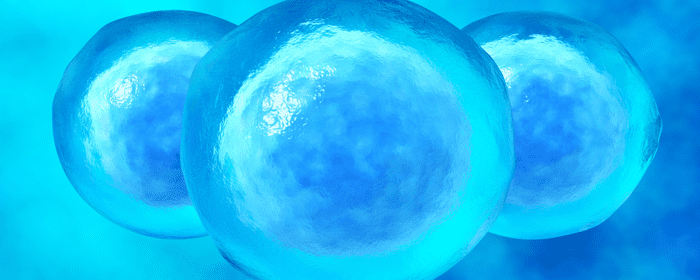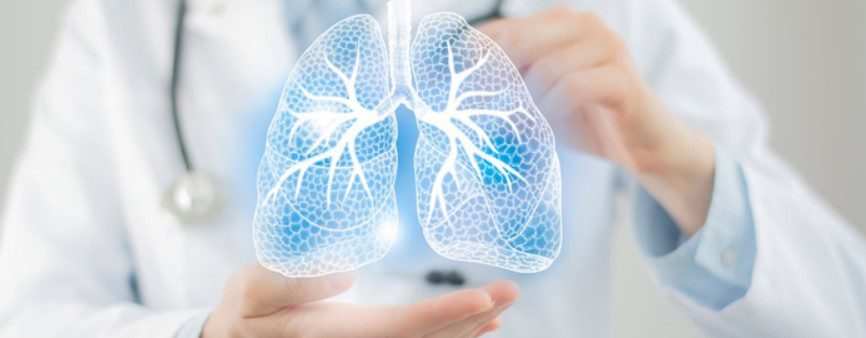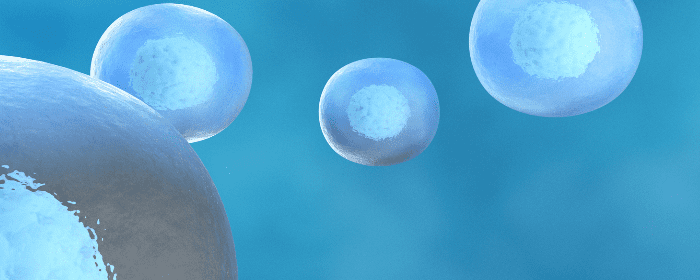
by admin | Feb 22, 2024 | ALS, Stem Cell Research, Stem Cell Therapy
Amyotrophic lateral sclerosis (ALS) is a progressive neurodegenerative disease characterized by loss of upper and lower motor neurons resulting in paralysis, respiratory insufficiency, difficulties speaking and swallowing, stiffness and spasticity, and muscle atrophy. Commonly known as Lou Gehrig’s disease, after the baseball player was diagnosed with it, ALS is diagnosed in an estimated 5,000 Americans each year.
Currently, ALS has a median survival time of 4.32 years and no known cure. As part of the effort to develop new therapeutic options to slow the progression of ALS, stem cell (SC) transplantation has shown potential in recent clinical trials.
In this review, Aljabri et al. examine the results of various clinical trials exploring the use of stem cell therapy as a viable therapy for ALS. Specifically, the authors identified six studies determined to have met the established criteria for review.
As part of this research, the authors examined the efficacy of SC transplantation in patients with ALS. Studies examined included a number of routes of administration, including subcutaneous, combined intrathecal and intramuscular, intravenous and intralumbar injections, and intrathecal approach. These studies all demonstrated slower decline or significant improvement as measured on the ALS Functional Rating Scale (ALSFRS-R).
While there appears to be a benefit in this application, the authors of two of the studies did not observe a significant difference in the efficacy between treatment and placebo groups after injections.
Additionally, the authors noted that all three studies using bone marrow mesenchymal stem cells (BM-MSC) demonstrated a significant decrease in the progression of disease burden and an overall slower decline in the ALSFRS-R score. On the other hand, studies that used granulocyte colony-stimulating factor (G-CSF) did not demonstrate a significant benefit.
While these results are promising, the authors point out limitations of the study that make it difficult to identify the long-term effects and long-term benefits associated with SC therapy. These limitations include short follow-up periods of either 6 or 12 months and the loss of patients during follow-up, both of which compromise the ability to determine long-term benefits and effects with fidelity.
Aljabri et al. also highlights many challenges associated with the introduction of SCs into the CNS. Among these challenges include the increased risk of AEs associated with the multiple SC injections required to deliver therapeutic doses and determining the most appropriate route of injection for therapeutic benefits.
The authors conclude that early clinical trials have made great progress in delineating the safety of SC therapy in the treatment of ALS. What remains to be determined is how effective SCs are compared to other forms of therapy. While the current data of SC therapy hold great promise, more properly designed clinical trials are needed to verify their benefit.
Source: Aljabri A, Halawani A, Bin Lajdam G, Labban S, Alshehri S and Felemban R (2021) The Safety and Efficacy of Stem Cell Therapy as an Emerging Therapy for ALS: A Systematic Review of Controlled Clinical Trials. Front. Neurol. 12:783122. doi: 10.3389/fneur.2021.783122

by Stemedix | Feb 19, 2024 | COPD, Pulmonary Fibrosis, Stem Cell Research, Stem Cell Therapy, Studies
Chronic obstructive pulmonary disease affects 16 million adults in the United States, according to the National Heart, Lung, and Blood Institute. COPD refers to two main conditions — chronic bronchitis and emphysema. If you’ve received a COPD diagnosis, it can be tough to know what to expect from the disease as it progresses. For many people, one of the leading questions is whether COPD can be reversed. Learn more about this disease and what kind of treatments offer promising results.
Symptoms of Chronic Obstructive Pulmonary Disease
COPD occurs because of damage to the airways or other parts of the lungs, blocking airflow and making it more difficult to breathe. Both chronic bronchitis and emphysema can lead to the development of COPD.
Chronic bronchitis affects your bronchial tubes, which carry air to and from your lungs. Bronchitis irritates these tubes, leading to the production of mucus that narrows the tube’s opening, making it much harder to breathe.
Usually, hair-like structures called cilia move mucus out of your airways, but the irritation from bronchitis damages the cilia.
Emphysema is a condition that affects the air sacs at the end of the bronchial tubes. These air sacs assist in the transfer of oxygen into your blood and carbon dioxide out. Emphysema destroys the walls of these sacs, making it tough to get a breath.
COPD can cause symptoms that include:
- Shortness of breath
- Chest heaviness or tightness
- Fatigue
- Ongoing cough
- Whistling or wheezing when you breathe
- Cough with mucus
Not everyone who has COPD experiences all of these symptoms.
Causes of COPD
One of the biggest risk factors of COPD is smoking. The majority of people who have COPD smoke or has a history of smoking. If you have a family history of COPD, you are more likely to develop it if you smoke. Smoke irritates the airways, causing inflammation while also damaging the cilia that moves mucus.
If you’ve suffered long-term exposure to other lung irritants, you could also be at risk. Irritants can be chemical fumes, dust, air pollution, smoke from home cooking, and heating fuel. Secondhand smoke can also be a factor.
Your age is also a consideration if you have other risk factors. Most people who have COPD are at least 40.
Infections like tuberculosis and HIV also put you at risk. If you have asthma, you also could experience COPD.
One of the potential genetic causes of COPD is a condition called alpha-1 antitrypsin (AAT) deficiency. If you have this condition, long-term exposure to fumes or smoking can result in lung damage, leading to COPD. AAT deficiency makes it easier to develop the disease earlier in life.
Treatment of COPD: Managing Symptoms
Treating COPD means finding ways of decreasing symptoms. The first thing you have to do is to quit smoking if you’re still engaged in this habit. Continuing to smoke as you deal with COPD will only make the condition worse.
Bronchodilators and steroids are options that can help with symptoms. If you have mild COPD, your doctor may prescribe short-acting bronchodilators that you use only when you experience symptoms. These bronchodilators relax the muscles around the airways.
If you have a more severe case of COPD, you may need to take bronchodilators every day. In some instances, your doctor may prescribe them along with steroids.
Can COPD Be Reversed? For some people, pulmonary rehabilitation is helpful. This option includes exercise training and breathing techniques to help you better manage the symptoms.
Oxygen therapy is another option. You receive supplemental oxygen from tubes that rest in your nose, a face mask, or a tube that goes into your windpipe.
Surgery is generally only done in people with severe COPD that doesn’t respond to other treatment options. There are a few different types of surgeries. Getting a lung transplant is another option, though it is even rarer than surgery.
Slowing the Progression of COPD: Promising Options
Although it’s not yet possible to reverse the conditions, it can be possible to slow down the progression of COPD. The first step is to get an early diagnosis and intervention. If you suspect you have COPD, it’s important to ask your doctor for a spirometry test.
If you have a family history of the condition or have smoked for a long time, it can help to get a test even if you don’t have symptoms.
It can also be helpful to learn both diaphragmatic breathing and pursed-lip breathing. Diaphragmatic breathing stimulates relaxation and increases oxygen saturation while also reducing the amount of air trapped in your lungs. Pursed-lip breathing, on the other hand, offers quick relief for someone experiencing shortness of breath and wheezing.
You will also need to avoid environmental triggers. These triggers can include air pollutants, extreme temperature changes, smoke, and strenuous activities.
Additionally, stem cell therapy offers the chance to slow down the progression of COPD. It uses stem cells to stimulate your body to start healing itself. It could speed up your lungs’ ability to heal themselves.
Stem cell therapy can also be helpful in preventing inflammation by assisting you in producing anti-inflammatory molecules.
One of the best things about stem cell therapy and other regenerative medicine options is that it’s minimally invasive and doesn’t require a long recovery process. You also don’t have to worry about side effects or rejections.
Living With COPD: Choosing the Best Treatment Strategies
Once your lungs suffer the kind of damage COPD causes, reversing the condition is usually not an option. However, this doesn’t mean you can’t improve your symptoms and even dramatically slow down the disease’s progression.
Can COPD be reversed? By turning to the right treatment options and making the necessary lifestyle changes, It’s possible to start seeing positive changes.
Stem cell therapy is an option that offers the chance to help your body heal itself, even if not entirely. A combination of treatments can be the most effective way of dealing with COPD, so make sure to speak with a specialist on your treatment options.

by admin | Feb 1, 2024 | Psoriasis, Mesenchymal Stem Cells, Stem Cell Research, Stem Cell Therapy
Characterized by scaly white or erythematous plaques, psoriasis is a chronic autoimmune dermatological disease most often appearing on the scalp, genitalia, lumbosacral area, and extensor surfaces of the limbs.
Affecting an estimated 125 million people worldwide, the condition most commonly is observed in those between the ages of 15 and 25 years of age.
The most recent advancements in the development of biological treatment have revolutionized the treatment of the condition for those with moderate to severe psoriasis, achieving clear or nearly clear skin with long-term success.
However, these treatments in their current form have not been proven to cure psoriasis completely. Additionally, a growing number of those suffering from severe psoriasis are not responding to these current therapeutic treatment options.
Recently, stem cell therapy, including regulatory T-cells, hematopoietic stem cell transplantation, and mesenchymal stromal cells (MSCs) have been used in patients with recalcitrant psoriasis. In this review, Naik discusses stem cell treatment options available for psoriasis.
Regulatory T-cells, or Tregs, regulate or suppress other immunocytes by modulating their responses to the endogenous environment and antigens, which helps to avoid autoimmune reactions and chronic inflammation. Several treatments for psoriasis, including many biologics currently being used, appear to increase the number of Tregs and their performance in patients with psoriasis. This finding led Naik to conclude that, despite their high cost, Treg-based therapies may have the ability to interfere with the pathogenesis of psoriasis.
MSCs have been found to have a significant role in adaptive immunity. This immune-enhancing activity typically occurs in partnership with a number of immune cells, including neutrophils, dendritic cells, monocytes, natural killer cells, macrophages, B-cells, and T-cells. While several Phase I and II studies have not demonstrated significant toxicity, the author calls for more extensive controlled trials to better understand the efficacy and long-term safety of MSCs in this application.
The favorable results observed when using hematopoietic stem cells (HSCT) in a wide range of autoimmune conditions, including lymphoma, leukemia, lupus, diabetes, rheumatoid arthritis, and multiple sclerosis, led to interest in using these cells in patients with psoriasis. Interestingly, improvements in psoriasis have been observed in patients who have undergone allogeneic (rather than autologous) HSCT, suggesting that hematopoietic stem cells could contribute as a primary cause of psoriasis.
Naik concludes that the application of stem cells in the treatment of psoriasis raises hope for the development of a safe and effective therapy for those suffering from severe forms of the condition. While more data is required before clinical application, MSCs could be a promising therapy for the treatment of psoriasis.
Source: Naik PP. Stem cell therapy as a potential treatment option for psoriasis. An Bras Dermatol. 2022;97(4):471-477. doi:10.1016/j.abd.2021.10.002

by admin | Jan 31, 2024 | Mesenchymal Stem Cells, Stem Cell Research, Stem Cell Therapy
Acute and chronic pancreatitis are associated with local and systemic inflammation that is linked to a host of serious health issues. A result of the digestive juices and enzymes attacking the pancreas, pancreatitis currently has no definite treatment.
Currently, it is estimated that over 6 million people worldwide are afflicted by acute or chronic pancreatitis with the number of diagnoses appearing to be steadily increasing.
The rising interest in stem cell therapy being used to potentially treat a wide variety of other diseases has led to interest in exploring it as a way to aid in the treatment of both acute and chronic pancreatitis.
As part of this review, Chela et al. examine numerous studies using commonly used stem cells to explore their promise in the treatment of pancreatitis.
A number of studies are utilizing stem cells to repair and replace tissue damaged as a result of numerous gastrointestinal diseases, including acute and chronic pancreatitis. In the case of using stem cells, and specifically mesenchymal stem cells (MSCs), to treat pancreatitis, researchers are interested in the ability of these stem cells to regenerate damaged cells and to influence the immunological and inflammatory response resulting from this condition.
A significant issue that has stymied progress in the ability of the pancreas to self-repair and regenerate when affected by pancreatitis is the perceived lack of stem cells found specifically in the tissue of the pancreas. While there has been conflicting research into whether or not stem cells exist in pancreatic tissue, the research reviewed by the authors indicates that there appears to be a tiny amount of stem cells located within pancreatic tissue.
Considering this and considering that additional research indicates that other stem cells found in the pancreas appear to originate from bone marrow (BM), the authors believe the ability of MSCs’ ability to differentiate will support the healing of the pancreas; these include stem cell sources from BM, adipose tissue, umbilical cord, and induced pluripotent stem cells (iPSCs).
Source: “Stem cell therapy: a potential for the perils of pancreatitis – PMC – NCBI.” https://www.ncbi.nlm.nih.gov/pmc/articles/PMC7433995/.

by admin | Jan 24, 2024 | Neural Stem Cells, Stem Cell Research, Stem Cell Therapy
Neuropathic pain (NP) occurs when the nerves located either inside or outside of the brain and spinal cord are damaged by a lesion or a condition. To date, pharmacological and surgical treatments to address NP have focused on providing symptomatic relief without treating the underlying cause of the condition. These treatment approaches have not been overwhelmingly successful with over 50% of NP patients attaining adequate pain relief.
Recently, an increasing amount of pre-clinical and clinical research has demonstrated cell transplantation-based therapy for NP to be a promising treatment alternative.
In this review, Yin et al. summarize the use of cell grafts for the treatment of NP, synthesize the latest advances and adverse effects, and discuss possible mechanisms to further the development of cell transplant-based therapies for NP.
Neural stem cells (NSCs) demonstrate the ability to divide, self-renew, and differentiate into neurons, astrocytes, and oligodendrocytes; they are also present in a wide array of tissues throughout the body. Considering they are capable of differentiating into neurons and glial, NSCs are considered an ideal candidate cell for replacing damaged nerve cells and delivering trophic factors to the site of lesions contributing to NP. Additional studies have demonstrated NSCs ability to regenerate nerves, offer neuroprotective effects, and secrete a number of factors that enhance the survival of motor and sensory neurons. NSCs transplantation coils also ease NP caused by peripheral nerve injury, a potential benefit that has been observed in animal models.
Olfactory ensheathing cells (OECs) are glial cells that surround and enclose the olfactory nerve bundle and possess the unique ability to transgress the peripheral nervous system (PNS) and central nervous system (CNS). Considering OECs have been shown to have neuro-regenerative functions, they are also considered to be a good choice for treating nerve injury and NP. Studies using animal models have confirmed that OECs transplantation could promote motor recovery and mitigate pain. Although OECs have good prospects of being used for treating NP, the authors call for additional research with longer observation time to verify their long-term effects and safety.
Mesenchymal stem cells (MSCs) can be obtained from a wide variety of sources and can be induced to differentiate into endoderm, mesoderm, and ectoderm cell lines. MSCs are often used for the treatment of diseases involving neuroinflammatory components and have been shown in animal studies to potentially alleviate NP symptoms.
Other cell therapies currently being evaluated for use as a treatment for NP include bone marrow mononuclear cells, GABAergic cells, and genetically modified cells.
The authors conclude that, despite the small number of clinical studies and the lack of systematic evidence, cell therapy as a treatment alternative for NP should be further explored. Specifically, further research should examine the optimal transplantation route, transplantation timing, number of transplanted cells, and transplantation survival rate.
Source: “Cell therapy for neuropathic pain – Frontiers.” 27 Feb. 2023, https://www.frontiersin.org/articles/10.3389/fnmol.2023.1119223.






 St. Petersburg, Florida
St. Petersburg, Florida
